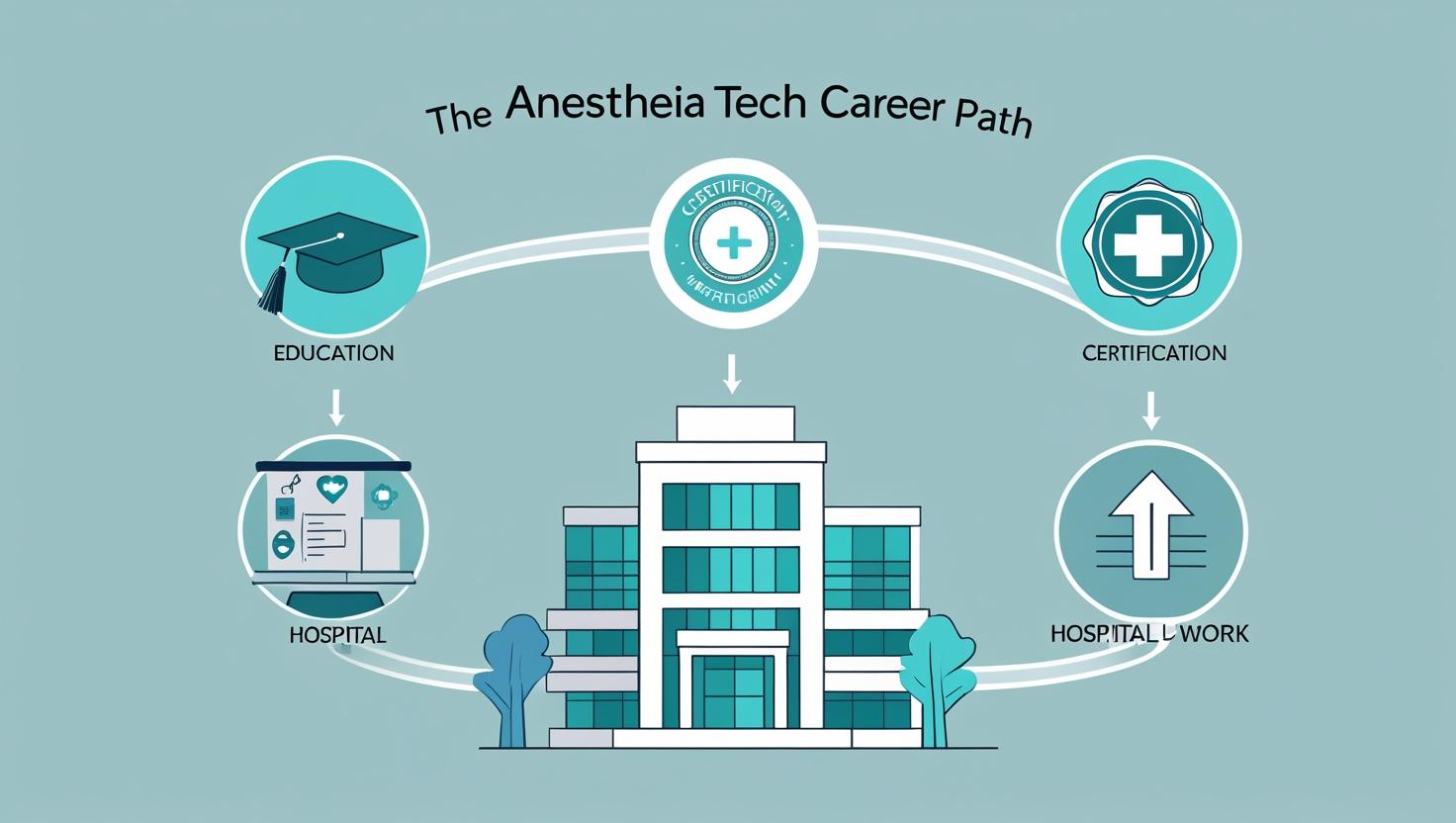An anesthesia tech plays a critical role in the fast-paced world of surgery, quietly powering every procedure from behind the scenes. While patients often never meet them, these skilled professionals are essential to making sure the operating room runs safely and smoothly. If you’ve ever been curious about operating room careers that blend technical knowledge, patient care, and real impact this is the field to explore.
Before you scrub in, it’s vital to understand the responsibilities, challenges, and rewards that come with this role. From mastering anesthesia machine operation to understanding complex medical terminology and supporting the anesthesia care team, this guide lays out what truly matters.
What Do Anesthesia Techs Do on a Daily Basis?
So, what do anesthesia techs do? They prepare the anesthesia machine operation, manage patient monitoring systems, and check all the tools before surgery. During surgery, they assist the anesthesia providers and make sure everything runs smoothly.
Techs also help with anesthesia patient care by cleaning and setting up the equipment after procedures. Daily duties may include stocking supplies, checking oxygen levels, and assisting with emergencies. All this makes their job important to the anesthesia care team roles.
The abilities and characteristics required to work as an anesthesia technician
To become a good anesthesia tech, you need both soft and technical skills. You must be calm under pressure and good at working with people. Knowledge of medical terminology, anesthesia pharmacology, and medical equipment maintenance is essential.
You’ll need to be organized and understand how to follow strict rules. Working in hospital operating rooms also requires you to focus on safety, hygiene, and teamwork. Many programs teach this through clinical practicum and hands-on clinical experience.
Education Path: Best Anesthesia Technology Programs
You need the right education to start. Look for CAAHEP-accredited anesthesia programs or those approved by the Committee on Accreditation for Anesthesia Technology Education (CoA-ATE). These programs give you the foundation needed for the job.
Many students choose anesthesia technician schools that offer an associate degree in anesthesia technology. Some also offer online anesthesia technician programs for flexible learning. These programs cover theory and practical training.
| Program Type | Duration | Offers |
| Associate Degree | 2 years | Full training with certification exam prep |
| Certificate | 1 year | Entry-level, fast track option |
| Online Programs | Varies | Flexible, good for working students |
Anesthesia Tech Certification and Licensing Requirements
After finishing school, you must get anesthesia technician certification. Most employers in the U.S. want techs with ASATT certification from the American Society of Anesthesia Technologists and Technicians.
You may need to pass a test to become a certified anesthesia technologist. Some states also ask for a license. To stay certified, you must complete continuing education units (CEUs) every few years. This helps you keep up with medical changes.
How Long Is an Anesthesia Tech Program?
Most anesthesia technician training programs take between 1 and 2 years. A certificate program may take less than a year, but a full anesthesia technology degree usually takes two.
If you’re looking at ASATT-approved programs, check whether they offer part-time or online options. Many students prefer online anesthesia technician programs if they’re working or have families.
Anesthesia Tech Salary and Job Outlook
The average anesthesia tech salary in the U.S. is about $45,000 to $60,000 a year, depending on experience and location. Those with more experience or professional certification may earn more.
Here is a table to help you see how much anesthesia techs earn:
| Experience Level | Average Salary |
| Entry Level | $42,000 |
| Mid-Level (2–5 years) | $55,000 |
| Senior (5+ years + Certification) | $65,000+ |
The anesthesia technician job outlook is strong due to aging population healthcare needs. More surgeries mean more techs are needed in surgical technologist and support roles.
Career Paths and Advancement Opportunities
After working a few years, many techs move into senior roles or become educators. You can also become a certified anesthesia technologist, which pays more and brings more responsibility. Some even move into allied health education or management.
If you’re interested in growing your career, consider adding skills in medical equipment maintenance, patient monitoring systems, or teaching future students. The anesthesia technology career path is full of growth.
How to Become an Anesthesia Tech: Step-by-Step Guide
Step 1: Finish high school and take science subjects like biology. 2: Enroll in a CAAHEP-accredited anesthesia program or other anesthesia technologist programs. 3: Complete clinical practicum and gain hands-on clinical experience. To learn more about the latest medical equipment technology used in operating rooms, visit GoTechanic. 4: Prepare for and pass the certification exam prep offered by ASATT.
Step 5: Apply for jobs in hospital operating rooms, surgery centers, or outpatient clinics. Step 6: Keep learning by earning continuing education units (CEUs) to renew your certification.
If you want to learn more about certified programs, check out the ASATT official website and CAAHEP directory.

Final Thoughts on Starting a Career as an Anesthesia Tech
A career as an anesthesia tech is perfect if you want to work in medicine without going to medical school. You’ll be part of an anesthesia care team and make a real difference in patients’ lives every day. The job is stable, rewarding, and in demand.
With proper education, training, and certification, you’ll be ready to join this important field. Whether you’re entering college or switching careers, learning how to become an anesthesia technician could be your next smart move in life.
FAQs:
- What do anesthesia technicians do in the operating room?
This question targets users looking to understand real-time responsibilities and is commonly searched by those considering healthcare roles. - How long does it take to complete an anesthesia technology program?
This query aligns with prospective students curious about program duration before committing to training. - Is certification required to work as an anesthesia technician?
Many searchers are unsure whether formal anesthesia technician certification is mandatory or optional in various U.S. states. - What’s the average salary for entry-level allied health careers?
This broader question helps attract users comparing diagnostic medical careers or looking for salary comparisons within healthcare. - Are there online programs for anesthesia-related education?
This appeals to people searching for flexibility, especially those balancing work, family, or remote access needs.


